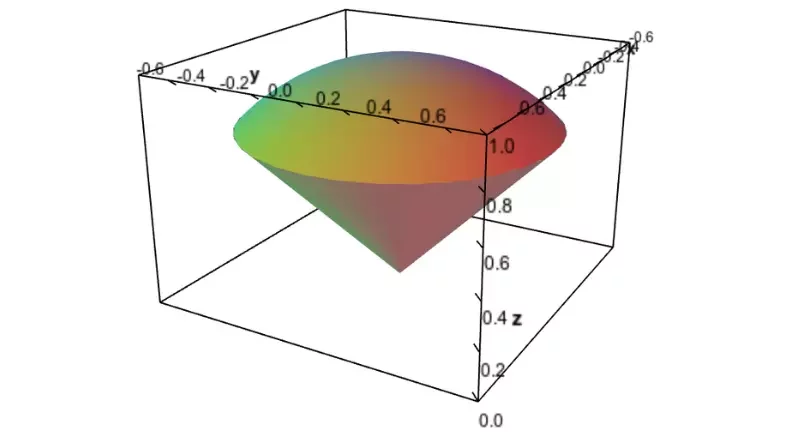Difference Between a Third Derivative and a Triple Integral
Integrals of Three
We must go to integrating over a three-dimensional region now that we are familiar with integrating over a two-dimensional zone. It shouldn’t come as a surprise that we’ll use a triple integral to integrate across a three-dimensional region as we previously utilized a double integral to do so for a two-dimensional region. The general triple integrals are denoted by the symbol Ef(x, y, and z)dV.
There are a online triple integral calculator available to calculate triple integrals within seconds and provides accurate results.
Begin by integrating over the box to keep things basic.
B=[a,b]×[c,d]×[r,s]
B=[a,b]×[c,d]×[r,s]
The xx’s are listed first, the yy’s second, and the zz’s third when using this notation.
In this instance, the triple integral is given by Bf(x, y, z)dV=sr,dc,baf(x, y, z)dxdydz.
∭Bf(x,y,z)dV=∫rs∫cd∫abf(x,y,z)dxdydz
It should be noted that although we integrated here with respect to xx, yy, and zz in that order, there is actually no justification for doing so. There are six possible orders in which to perform the integral, and you should choose the one you think will be the simplest based on the function. But regardless of the order, we will still receive the same response.
Let’s quickly demonstrate this kind of triple integral.
Example
Analyze the subsequent integral.
∭B8xyzdVB=[2,3]×[1,2]×[0,1]
Let’s use a different sequence from the one stated above to illustrate the idea that the order is irrelevant. The integral will be completed in the following order.
∭B8xyzdV=∫21∫32∫108xyzdzdxdy
s=∫21∫324xyz2∣∣10dxdy
s=∫21∫324xydxdy \s=∫212x2y∣∣32dy
s=∫2110ydy=15
How Do Higher Derivatives Work?
A different function results from the derivative of a function. This new function will be referred to as the first derivative for reasons that, hopefully, will become evident in due course. By this point, you should be familiar with the concept that the slope of the original function for any value of x for which the original function is defined is given by the derivative, which is a different function.
We thought to be able to plot the graph of the first derivative as it is a function in and of itself. Also assuming that we ought to be able to take its derivative seems sensible. We refer to this derivative as the second derivative of the original function because it would be a derivative of a derivative.
If you want to get rid from calculation, you should use 3rd derivative calculator and get quickly results with step by step solution.
Let’s examine a case in point. The graph of the function (x) = 4x 4 – 2x 3 – 12x 2 is shown here:
The Lagrange notation, which is discussed elsewhere in these pages, is the notation we have chosen to indicate the first derivative of a function. To show that this is the first derivative of the original function, a single prime symbol (“”) is inserted right after the function symbol in this notation. We add two prime symbols right after the function symbol to represent the second derivative. There are three prime symbols used to represent the third derivative. We can also choose to use Liebniz’s notation; we’ll see how it appears in due course. We’ll continue using the Lagrange notation for the time being.
To determine the derivative of the function y = 16x 3 – 6x 2 – 24x, we shall once more apply the fundamental principles of differentiation. This will provide us with the original function’s second derivative, which we can express as ′′(x) = 48x 2 – 12x – 24.
A function’s derivative of the derivative of the derivative can also be found. This derivative is known as the third derivative. By taking the derivative of y = 48x 2 – 12x – 24 (the second derivative), we may derive the third derivative: ′′′(x) = 96x – 12
Even better, we can use the fourth derivative, which is the derivative of the third derivative: (4)(x) = 96.
A linear graph is produced by the third derivative. The resulting graph is also linear and parallel to the x axis because the fourth derivative has a constant value. Keep in mind that we use a superscripted number contained in parentheses to denote the ordinal starting with the fourth derivative. We do this for clarity’s sake because a number is simpler to understand than a long string of prime symbols is. The number is protected from being misconstrued for an exponent by the use of parentheses. We give the graphs of the third and fourth derivatives below for completeness even though we are typically not particularly interested in derivatives that result in linear graphs. Because it is the derivative of a constant, the fifth derivative will be zero.
Higher derivatives or higher order derivatives are any derivatives of a function that come after the initial derivative. You may possibly be wondering why we would be interested in the derivative of a derivative or the derivative of a derivative of a derivative. This is a very reasonable question. We are aware that for any value of x for which the function is defined, the first derivative of the function informs us how quickly the function is changing, or the slope of the function. In other words, it informs us of the instantaneous rate of change of the function. Similar to the first derivative, the second derivative indicates the rate of change of the function’s first derivative, which is also a function. It is the rate of change of the original function’s rate of change. We can determine how quickly the function’s second derivative is changing by looking at its third derivative. It is the rate at which the original function is changing at a rate that is itself changing.
Understanding what a derivative genuinely reflects becomes increasingly challenging as the derivative’s order increases. Fortunately, we only frequently have to deal with derivatives higher than the third. Although the second and third derivatives can also be very helpful, we already know that the first derivative provides us the rate of change of a function. For instance, we can utilise the second derivative to aid in locating probable maxima and minima of a function. But we’ll talk about that in another context. Higher order derivatives are also used practically in fields like physics. The standard illustration is the comparison between acceleration and speed (or velocity).



